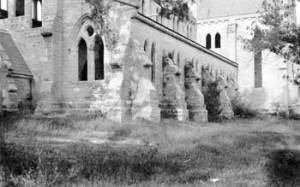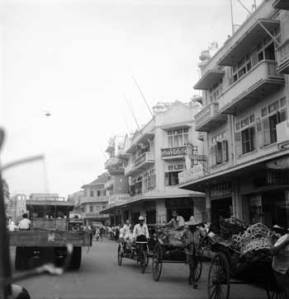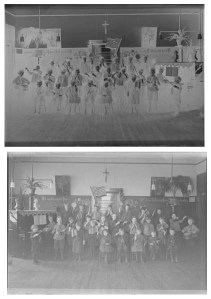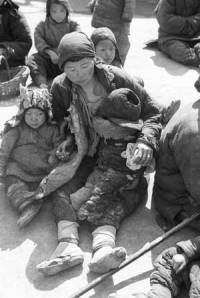Work began this past summer on a second NEH grant to preserve and share photographs in the collections of the American Geographical Society Library, here at UW-Milwaukee. The collections we have been working with date between 1890 and 1950 and come from a range of geographers/photographers. Some of the collections we have worked with embody a life’s work, and as a result, are quite sizable. One of our biggest collections comes from esteemed photographer, Harrison Forman, who was not a geographer but travelled the globe with his many cameras. The AGSL is fortunate to be the repository for his remarkable collection – his photographs are the source of the images documenting the
Henan Famine that were posted to this blog last week. Other sizeable collections include the photographs of Robert Swanton Platt, who pioneered a unique field study of Latin America, and Robert Larimore Pendleton’s career photography of Thailand.
 |
| Photograph of Bermuda, Unfinished Church in St. George, by Robert Platt |
Check this blog to read more stories about these collections and some of our smaller collections as well, as we progress in our work. Here’s one to get started:
“Boo-eek”
After looking at over 10,000 images and their corresponding photographic notes, you start to get to know the photographer, their style, interests, thought processes, and sense of humor. This was certainly the case with Robert “Papa” Pendleton. We learned early on that Robert Larimore Pendleton and his wife Anne spent most of their married life in Thailand, never had children, and were respected and loved by the Thai people they interacted with for more than 30 years. The locals bestowed upon Pendleton the Thai term of endearment, “Papa.” We also learned that he had a good sense of humor. His photographic notes are filled with wit and inside jokes. Naturally, it can take a while to figure out the inside jokes! For example, around image 12,000, we find Pendleton in the market place of Bangkok. He took lots of pictures of streets filled with vendors, including Bangkok’s Chinatown. An entire roll of film from this period includes images of the markets “from the Boo-eek.” Yes, you read that right, from the Boo-eek, spelled just like that. Could it be a phonetic spelling for a bridge, a building, a particular part of Bangkok’s Chinatown?
 |
| Thailand, Yaowarat Road in Bangkok's Chinatown, from the Boo-eek |
 |
| Thailand, Automobile Traveling on Road (the Buick) |
We attempted all kinds of searches and translations, but could not figure out what “Boo-eek” was. This is a huge, time based grant project, and our team eventually had to abandon interpretation. The images were added to the online collection without explanation. Months later, we came across an image of a car on a country road. The photographic note read: “Looking east NE. Boo-eek.” Eureka! The picture was of a car on a country road. There is no market. Just a road, trees, clouds, and the car. We zoomed in on the car, a c.1940’s Buick sedan. A “Bu-ick”. He addressed his car phonetically! Pendleton’s joke was on us, 64 years after the fact!
-Tamara Johnston, Project Manager






